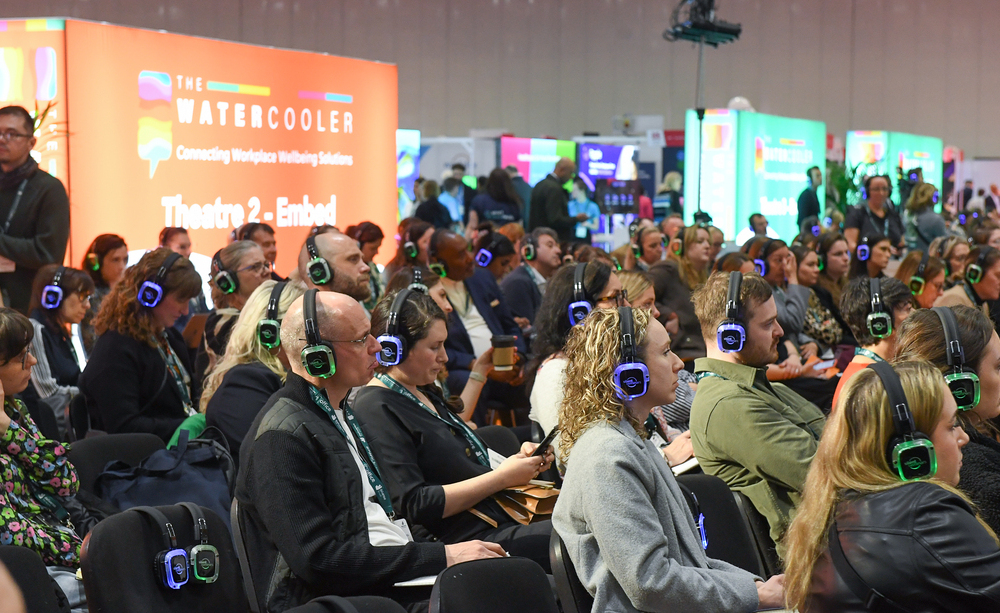When Jordan Pettman announced on LinkedIn a year ago that he was leaving Nestle for LSEG (London Stock Exchange Group) the comments came flooding in from people who have worked with him proclaiming him ‘the best of the best’ in people analytics.
He also wrote that he was joining LSEG at a “super exciting time for the business” and had been hired to “accelerate people strategy and outcomes through people analytics”.
We caught up with him after his first year to find out more about his post as head of organisation and insights at LSEG.
People analytics is a hot topic in wellbeing right now. How would you define it?
It’s the practice by which we either take existing data about the employees in our organisation, or we create new data. If there’s a data gap we can plug that by doing something like a survey, or a focus group. The data from this helps us make better decisions about the employee experience and how they contribute to business outcomes.
So why did you join LSEG at such an exciting time in terms of people analytics, and what has been your focus over the last year?
When I joined, LSEG had just acquired the data and analytics company Refinitiv. So this required us to integrate the two separate businesses to a single platform for HR processes while maintaining an integrated view of circa 25,000 employees in the interim. Our job was to get that integrated data into the hands of HR business leaders and partners so they could see what was going on in their workforce.
Once that was done we were able to pull out all the data we had in order to start working out our priority actions across talent function delivery, through the lens of DEI. We were able to point to groups of employees whose experience started to be different from the majority at a point in time in their journey. That then allowed our talent team, working with our DEI team, to speak with those groups and seek to address where their careers experiences are different – this then became a focus for their work during 2022.
Now we’re able to say ‘we did this piece of analysis, we designed this intervention and we can see whether that intervention had the desired effects’.
Could you talk us through a hypothetical example of how you could use people analytics in wellbeing?
In order to use data to support the narrative around employee wellbeing, the first step is really understanding what we explicitly mean when we talk about employee wellbeing. Then we’d start with a hypothesis by looking at wellbeing topics we’re interested in to understand better. It could be that “employees are unable to effectively manage their work and life commitments leading to an adverse effect on employee wellbeing”.
Then we would seek out the data that would inform us if the hypothesis is correct or not. We might look at data points like absence days due to stress, or absence rates across time to see where there are absence days following a weekend, or there’s a pattern to people taking time off. We might look at survey results about whether employees perceive they are able to manage their workload as well.
Then we’d describe how we would describe the effectiveness of a wellbeing programme. It could be that employees felt that they could manage their work and life commitments, or they felt that they could speak up or that they had a great ergonomic set up at their home office…
It’s about really getting down to those brass tacks around how you would know what success looks like. If we don’t have the data to describe success we would go away and create it, which you can do through a survey or focus groups asking questions to create data to fill in the gaps.
In that way, we clearly articulate what we mean by wellbeing – and, how we understand that trends in wellbeing are positive, or otherwise, and design and measure the effect of interventions to improve employee wellbeing.
Why do you think people analytics is becoming such a hot topic now in wellbeing?
While we don’t use this data at LSEG, right now the world of people analytics is excited about the potential to use communications metadata to understand employee behaviours at work; that’s data that doesn’t dive into any of your personal details but gives us behavioural information about the workforce through understanding trend data out of work tools like emails and meetings, project management tools and others.
This is exciting because it is an avenue for us to understand differences in perception of employees and their behaviours. For instance, the people in my division might have said in an engagement survey that we feel like our boss gives us the ability to manage work and life commitments well. But then the aggregate metadata from communications channels reveals that folks in my division attend thirteen thirty-minute meetings a day on average, and that we read and respond to emails at half past six in the morning, and activity on email continued after meetings closed until 9pm. That provides unique insight that maybe employee perception and employee behaviour aren’t lining up with what we’d like, which tells us something about what we could do to improve employee wellbeing – by ensuring that employee behaviours are in line with the sort of employee experience we’d like to deliver to and for employees.
LSEG has recently appointed a new global head of culture, wellbeing and inclusion, is that right?
Yes, Rachel Osikoya. She and I are spending time planning how we can work together to influence company culture, employee wellbeing and DE&I outcomes. For us, this means focusing on understanding what’s really going on in the experience of employees and genuinely driving towards measurable improved outcomes.
What are the biggest challenges around using people’s data?
Transparency and general understanding of what data can be used by organisations and for what reasons. Where it can sometimes be challenging is that from a legal point of view, companies can use data that they need to in order to manage the employment relationship. Beyond that – when we start to get into sensitive data like your personal data, your health data, diversity data – those have far more rules around the way we use them.
We need to be transparent with employees. We have got to make clear that we wouldn’t ever actually look at an individual’s meeting attendance or email traffic, we’d look at groups of employees. That the data employees share about themselves helps the organisation to make decisions about policy that deliver better equitable access to benefits, or career programmes, or even pay.
Overcoming the challenge is essentially achieved by explaining the process and purpose of the use of employee data and really bringing employees on that journey of understanding around what data we collect and why, how we use it, what’s in it for them and how we don’t use it. We want employees to understand why it’s a really good idea for them to share. For us, it’s because with employees trust in the way we manage their data, and their sharing of it, we are better able to make great decisions as a business to ensure that our culture is inclusive and delivers employee experiences mindful of diversity and well-being in a deliberate and consistent way.
Where’s your focus when it comes to people analytics at LSEG over the next year?
One of the big things that we will be focusing on in the coming year is why employees can trust us to do the right thing with their data because it’s going to lead to positive outcomes for them. As the data infrastructure company for financial services, we want to set the standard for the way that data is processed, including our employee data. Without that trust, LSEG, and other companies will never have the information they need to be able to make great policy decisions.
Some are saying that people analytics is going to change the face of wellbeing by using data to ensure it’s taken seriously at board level. What do you think?
I don’t necessarily think that analytics will change the face of wellbeing, but analytics can be an enabler to catch the attention of business leaders. With people analytics practices, you’re able to say ‘dear business leader, here’s your outcome metrics and the behavioural indicators that drive them. If we focus on moving our behaviours, we’ll also see the outcome metrics shift in the way we’d like them to.’ That’s a face of wellbeing that I think we would all enjoy looking at.
You might also be interested in:

















